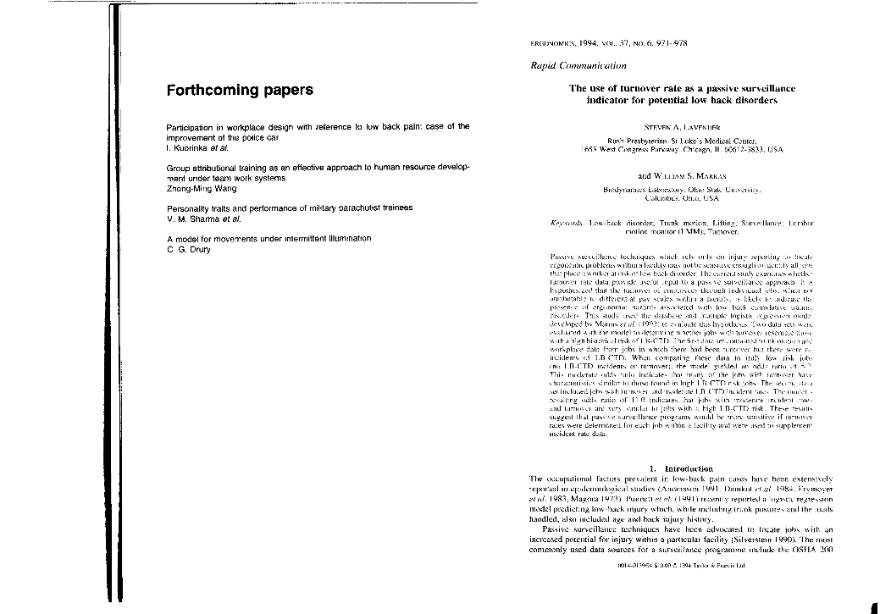The Use of turnover rate as a passive surveillance indicator for potential low back disorders

Contenido multimedia no disponible por derechos de autor o por acceso restringido. Contacte con la institución para más información.
| Tag | 1 | 2 | Valor |
|---|---|---|---|
| LDR | 00000nab a2200000 i 4500 | ||
| 001 | MAP20071020426 | ||
| 003 | MAP | ||
| 005 | 20080418120223.0 | ||
| 007 | hzruuu---uuuu | ||
| 008 | 940713e19940601gbr|||| | |00010|eng d | ||
| 035 | $a6800012720 | ||
| 040 | $aMAP$bspa | ||
| 084 | $a875 | ||
| 100 | 1 | $0MAPA20080247485$aLavender, Steven A. | |
| 245 | 1 | 4 | $aThe Use of turnover rate as a passive surveillance indicator for potential low back disorders$cSteven A. Lavender and William S. Marras |
| 520 | $aPassive surveillance techniques which rely only on injury reporting to locate ergonomic problems within a facility may not be sensitive enough to identify all jobs that place a worker at risk of low back disorder. The current study examines whether turnover rate data provide useful input to a passive surveillance approach. Two data sets were evaluated with the model to determine whether jobs with turnover resemble those with a high historical risk of the low back cumulative trauma disorders | ||
| 650 | 1 | 1 | $0MAPA20080550653$aErgonomía |
| 650 | 1 | 1 | $0MAPA20080619480$aEnfermedades profesionales |
| 650 | 1 | 1 | $0MAPA20080591960$aMétodos de análisis |
| 650 | 1 | 1 | $0MAPA20080624606$aMicrotraumatismos repetitivos |
| 700 | 1 | $0MAPA20080225438$aMarras, William S. | |
| 740 | 0 | $aErgonomics | |
| 773 | 0 | $tErgonomics$dLondon and Washington$gVol. 37, nº 6, June 1994 ; p. 971-978 |

